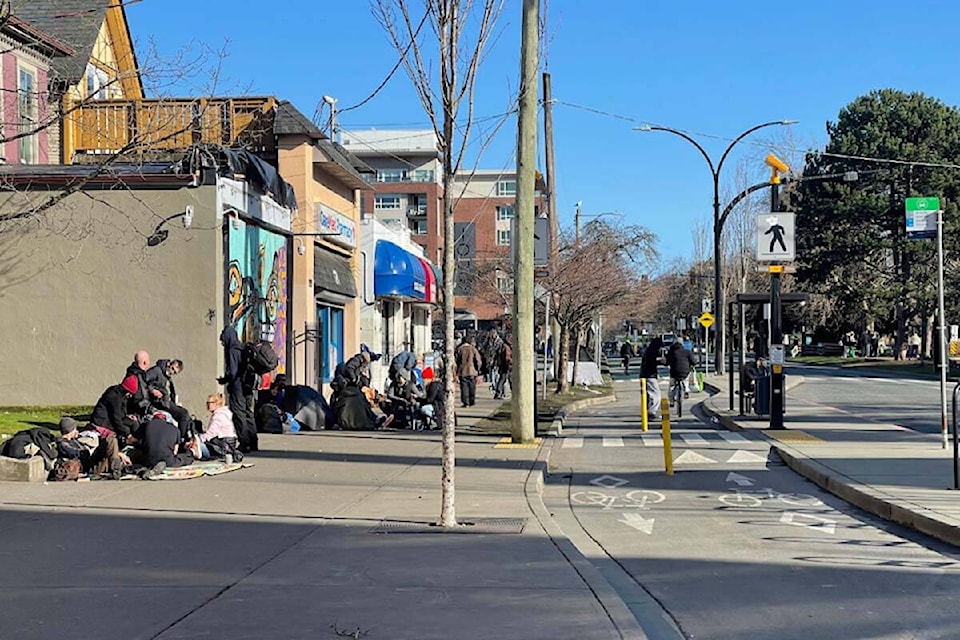At least 342 people experiencing homelessness died in 2022, according to a new report from BC Coroners Service, with toxic drugs playing a major role.
This figure, which appears in an information bulletin from the Ministry of Public Safety and Solicitor General, marks an increase of 28 per cent compared to the figure from 2021 (267). It also points to a significant spike in deaths during the last two years.
Whereas BC Coroners Service counted at least 275 total death for 2019 and 2020, the two-year-total for 2021 and 2022 was 609, an increase of 138 per cent.
BC Coroners Service considers about 90 per cent of the deaths (308) accidental with 287 — so 93 per cent — linked to what the report called unregulated drug toxicity. So about 83 per cent of all deaths among homeless British Columbians link to back to the toxic drug crisis that has claimed in excess of 13,100 lives since the provincial government had declared a public health emergency in 2016.
“Just as it has across all demographics and in communities throughout B.C., the toxic drug supply has significantly contributed to the increased number of deaths among people who are precariously housed or experiencing homelessness,” it reads. “Because housing data was unavailable at the time of analysis, rates of death and any possible correlation between deaths and the number of people experiencing homelessness in the province could not be determined.”
Almost 80 per cent of the deaths counted in 2022 were men and almost one third of all deaths were individuals between ages of 30 and 39.
RELATED: Anger over unresolved toxic drug crisis as B.C. chief coroner exits
RELATED: Spike in toxic drug deaths prompts safety warning from BC Coroners Service
The death toll among homeless individuals also has a distinct geography.
Looking at accidental deaths alone, most happened in Vancouver (69) followed by Surrey (25) and Victoria (28). But this raw number obscure Victoria’s status as the most deadliest place for homeless individuals as measured per capita. Whereas Vancouver has a rate of 9.77 deaths per 100,000 based on a 2022 population of 706,012, Victoria’s per capita rate is just about 28 per 100,000 based on an estimated population of 96,390.
RELATED: Point in Time count to take ‘snapshot’ of homelessness in Greater Victoria
Of note is also the spike in deaths in Kamloops, where the number of homeless deaths rose from 6 in 2021 to 20 in 2022 after having been in the single digits for each year for the period from 2015 to 2021.
The report defines homeless individuals as people who live outdoors in various types of structures not intended for habitation and people staying in overnight shelters (one night) or staying with friends and families for less than 30 days, as well as short-term shelters, youth safe houses or transition houses for women and children fleeing violence.
The report with its strong connection to the toxic drug crisis appears one day after BC Coroners Service had issued a public safety warning to anyone using substances purchased from the illicit market.
“While data is still under review, preliminary indications suggest unregulated drug toxicity has caused more than 200 deaths in November 2023, and that the province has averaged about seven deaths per day for the past seven weeks,” it reads. “Unregulated drug deaths in the winter months have historically increased over the numbers reported during the rest of the year, so this early increase could be a sign of another challenging season for people who use drugs in B.C.”
This seasonal aspect also shows through in the report tracking deaths among homeless more than half of all deaths since 2015 have taken place in the fall (27 per cent) and winter (26 per cent) months of the year.
@wolfgangdepner
wolfgang.depner@blackpress.ca
Like us on Facebook and follow us on Twitter.
